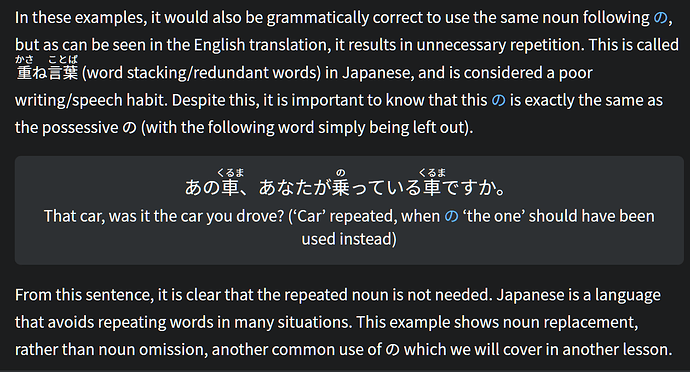Dang!! Long thread, and not even that old. Harsh vibes too.
But hey, while we’re at it, I do want to throw in an anecdote re: writeup verbosity, but it’s actually a fairly nuanced statement. Let’s see how well that goes over 
For context as to why I can say what I’m about to say: my friends and I hold brief study groups every other Saturday evening, half as a social function and half to hold ourselves accountable for getting back to reviews if any of us have “fallen off the wagon.” So I get opportunities to see how different people engage with the Lesson-taking leg of learning.
My friends and I work through Lesson content very differently from each other. I’ve mentioned before, but I’m a very gut-feel learner, and also have a lot of bootstrapping in-place because of having learned chunks of the language phonetically first; my approach to Lessons is to glance at them, skim quickly over the writeup if at all, usually completely skip the examples, and start grinding away at the SRS.
I’m sure a lot of that almost-complete-disregard for the Lesson content is because I’m in large part just ironing out the wrinkles in stuff I “already know” and formalizing my understanding somewhat, but I approach learning new things the same way as well; I have a similar pattern even on WK when I’m looking at a new kanji that I don’t recognize for crap.
Meanwhile, one of the friends in my group is extremely rules-oriented, and he pours over the writeups and examples, which are absolutely essential to him, sometimes even complaining that they don’t say enough!
His learning pattern and mine have very poor affinity so it’s hard to share knowledge between us  But I’ll say with absolute conviction that there’s immense value in having Lesson content that is both skimmable but which also goes deep into the weeds.
But I’ll say with absolute conviction that there’s immense value in having Lesson content that is both skimmable but which also goes deep into the weeds.
My suggestion? Could just summarize the most critical info in the first paragraph(s) or so, and then have a Read More thingy that sites like YouTube and Pixiv have taken up.
Alternatively, you could have a radio button switch, similarly to what you have for politeness registers in Lessons, or the Grammar / Vocab split you present on the dashboard, for choosing whether to see the “outline” or to show the “in-depth” writeup.
Anyway, if it makes y’all feel better, I’m definitely in the “No better product than BunPro, would highly recommend” camp-- Being a WIP comes with both big plusses but also caveats, but I think as long as the fact that it’s perpetually-WIP is clear and transparent, the positives vastly outweigh the drawbacks, and I’m always excited to see it grow!
I mean, heck, being WIP means that if you buy Lifetime, that means that you get infinite free future value! 

 ). In this particular case we still strongly feel there is a connection to the 聞き手 - 話し手 relationship even in the prohibitive な and will continue to research and build upon it.
). In this particular case we still strongly feel there is a connection to the 聞き手 - 話し手 relationship even in the prohibitive な and will continue to research and build upon it.


 But I’ll say with absolute conviction that there’s immense value in having Lesson content that is both skimmable but which also goes deep into the weeds.
But I’ll say with absolute conviction that there’s immense value in having Lesson content that is both skimmable but which also goes deep into the weeds.